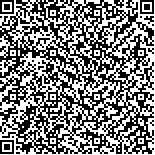沈滢,殷稚飞,周秋敏,丛芳,伊文超,单春雷.低频重复经颅磁刺激治疗脑卒中后非流畅性失语的疗效观察[J].中华物理医学与康复杂志,2016,38(3):170-174
扫码阅读全文

|
| 低频重复经颅磁刺激治疗脑卒中后非流畅性失语的疗效观察 |
|
| |
| DOI: |
| 中文关键词: 重复经颅磁刺激 脑卒中 非流畅性失语 西方失语成套测验 日常生活交流能力检查 |
| 英文关键词: Repetitive transcranial magnetic stimulation Stroke Non-fluent aphasia Western Aphasia Battery Communication Abilities in Daily Living |
| 基金项目:国家自然科学基金面上项目(81472163);国家自然科学基金面上项目(81171853);江苏省“六大人才高峰”项目(N2011-WS-100);江苏省卫生厅兴卫工程重点学科基金(XK20200903) |
|
| 摘要点击次数: 3648 |
| 全文下载次数: 6389 |
| 中文摘要: |
| 目的观察低频重复经颅磁刺激(rTMS)治疗脑卒中后非流畅性失语的临床疗效。 方法将40例脑卒中后非流畅性失语患者按随机数字表法随机分为rTMS组(n=20)和对照组(n=20)。两组患者均给予常规言语治疗,rTMS组在右侧大脑半球Broca镜像区给予0.5Hz的rTMS治疗,每日1次,每周5次,连续治疗3周。于治疗前和治疗3周后(治疗后)采用西方失语成套测验(WAB)和日常生活交流能力检查(CADL)评定2组患者的语言功能和交流能力。 结果治疗后,对照组患者WAB评分中,仅自发言语较组内治疗前有显著改善,差异有统计学意义(P<0.05),rTMS组患者WAB各项评分较组内治疗前均显著改善,差异均有统计学意义(P<0.05),且听理解、复述、命名以及AQ评分分别为(153.90±31.79)分、(82.65±15.14)分、(81.28±22.12)分和(63.66±13.64)分,均明显优于对照组治疗后,差异均有统计学意义(P<0.05)。 结论0.5Hz的rTMS作用于右侧大脑半球Broca镜像区可显著改善脑卒中后恢复早期非流畅性失语患者的语言功能。 |
| 英文摘要: |
| Objective To investigate the effects of low frequency repetitive transcranial magnetic stimulation (rTMS) on non-fluent aphasia in patients after stroke. MethodsForty stroke patients displaying non-fluent aphasia were randomly assigned to an rTMS group and a control group using a random number table. Both groups were treated with conventional language therapy, while the rTMS group was additionally given 0.5 Hz rTMS over the Broca′s homologues of the unaffected hemisphere 5 days a week for 3 weeks. The patients were stimulated at 90% of the motor threshold (MT), with 16 second trains and intervals of 3 seconds 48 times (384 pulses) in a session. Before and after the 3 weeks of treatment, the Western Aphasia Battery (WAB) and the Communicative Abilities in Daily Living (CADL) test were conducted in both groups to evaluate their language function and communication ability. ResultsOnly spontaneous speech improved significantly (P<0.05) in the control group after 3 weeks of treatment. In the rTMS group, the spontaneous speech, auditory comprehension, repetition, naming and aphasia quotient (AQ) had all improved significantly (P<0.05). Moreover, after the treatment, the average score of the auditory comprehension (153.90±31.79), repetition (82.65±15.14), naming(81.28±22.12) and AQ (63.66±13.64) of the rTMS group were significantly higher than those of the control group (P<0.05). ConclusionrTMS applied to the Broca′s homologues of the unaffected hemisphere can significantly improve language function in those exhibiting non-fluent aphasia after stroke. |
|
查看全文
查看/发表评论 下载PDF阅读器 |
| 关闭 |